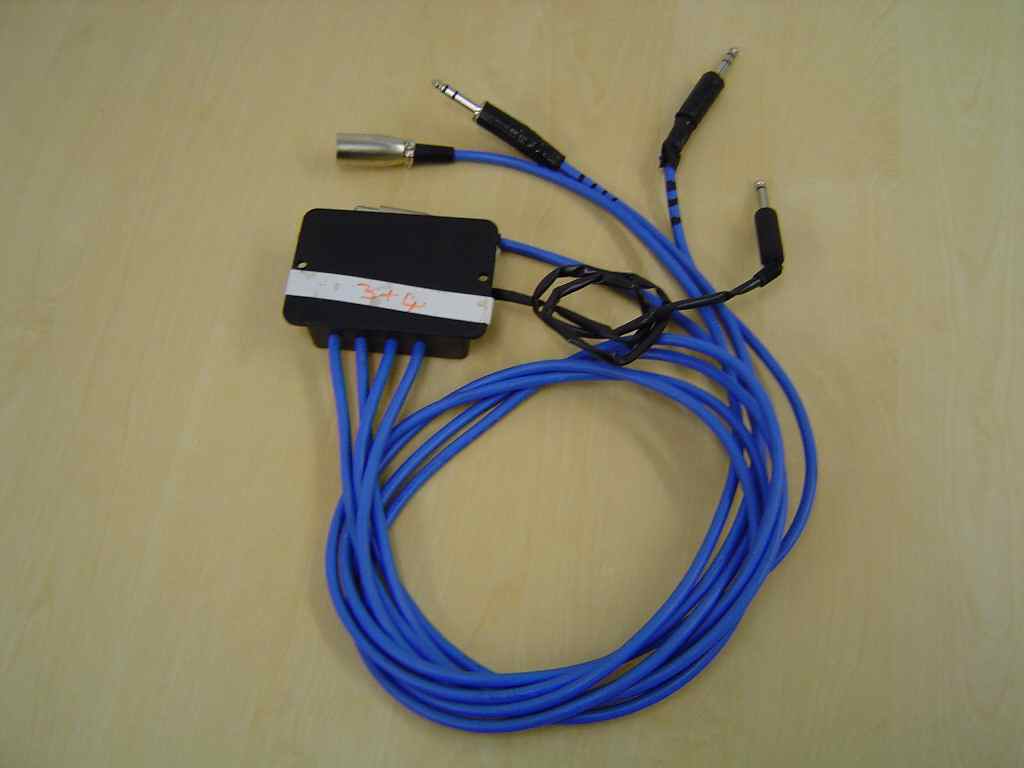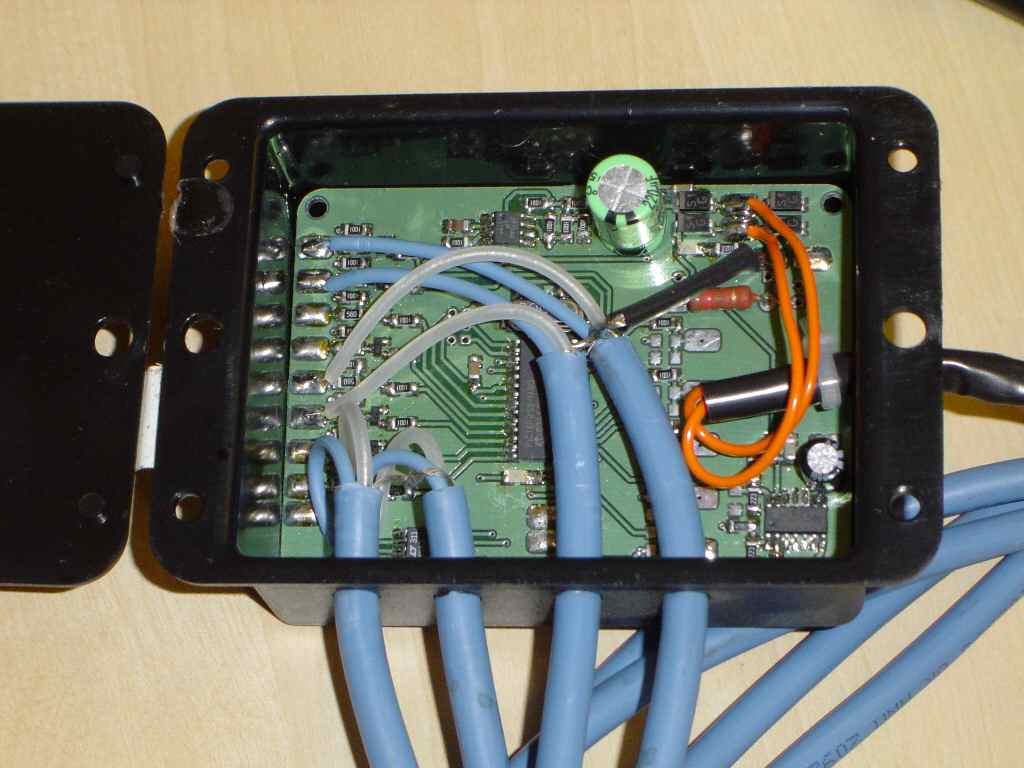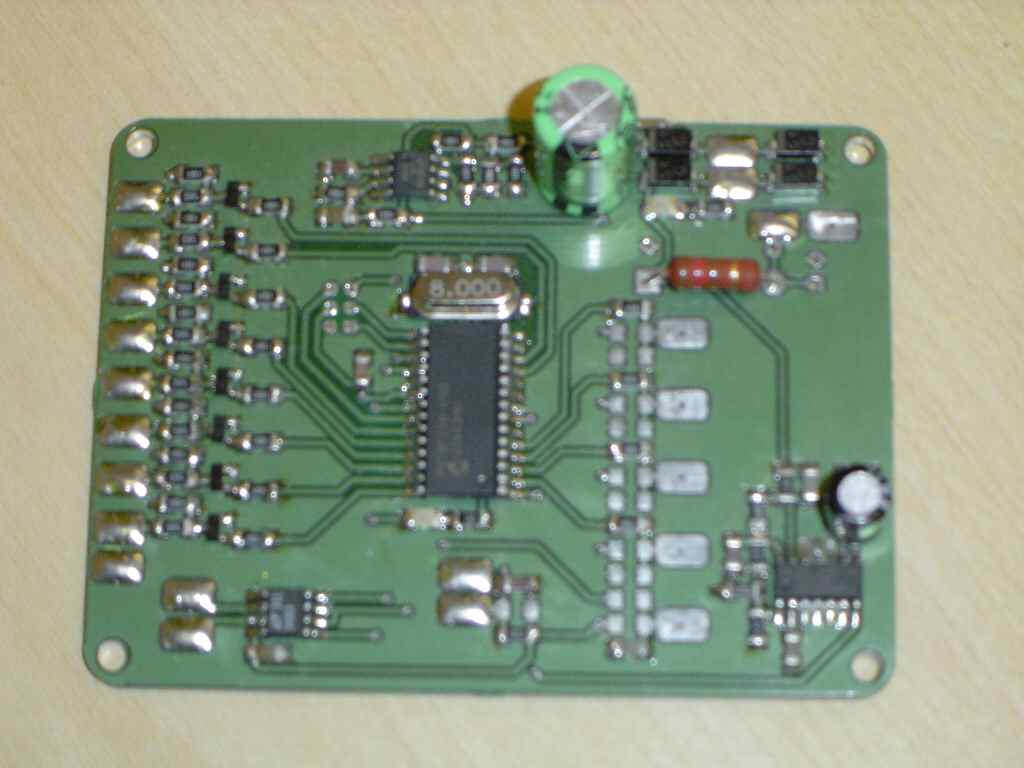
I think that Optikinetics Strobeflowers are a unique and fantastic lighting
fixture. They use a short arc xenon flashlamp which gives an easily focussed
pure white light beam output.
The Club Strobeflower is a direct evolution from the Quasar Xe900 strobe
projector and the first large colour changing Strobeflowers, both of which
had some rather crude discharge circuitry that was well know for making
clicks in audio systems, making them hated by sound engineers. The Club
Strobeflower has much more advanced flash circuitry that does not generate
anywhere near as much RFI. Club Strobeflowers can be bought as a package of
four heads with an analogue controller that allows simple chases and beam
effects that can also respond to audio input. The control input to a Club
Strobeflower is via a 1/4" TRS (Tip/Ring/Sleeve) stereo jack socket, along
with a straight through output to daisy chain to other heads. The Sleeve is
a +ve supply of 20V (10V works fine too!) from the controller, with the Tip
and Ring pins being 'pulled' (connected) to 0V to turn on the beam and the
rotation motor respectively. (** I must check that I got this the right way
round for these two**)
With the advent of DMX control in the lighting industry, Opti revised the
Club Strobeflower to include DMX input as standard, and also catered for
customers with the older analogue units by making a DMX to analogue
converter box which uses two DMX channels, one for beam, one for rotation
AFAIK. I've never actually seen or used one.
This is a professional and commercially available device, but at £120+VAT
each they're a bit too costly for my liking when I have eight heads to
control. I can make my own version out of the rejects tray from work (it
does help working in an electronics design company). My controller is very
much string and Sellotape level compared with the Opti product, but it works
for me and I have used it in many gigs now with no serious problems.
The circuit I have designed is based on a flash updateable PIC18F258
microcontroller with DMX inputs, a mains cycle zero-crossing detector and
eight simple open collector transistor outputs. The unit can be powered from
12VAC that I get from the spare output socket on the side of the
Strobeflower, after slightly modifying the PCB inside the Strobeflower to
give a permanent 12VAC output (normally it switches on and off with the beam
rotation motor)
**DANGER ** don't open up Strobeflowers unless you
know about all the
dangers that lurk inside them.
It would be just as easy to box the PCB with a
small mains transformer. Up
until now I have built two DMX boxes which both control a pair of
Strobeflowers. The DMX address is hardcoded at 49 in the software as there
are no DIPswitches on the PCB, and I don't need to change the address for my
rig.
The software is made to reduce the load on the the lighting desk, so I made
it with the capability of doing chases for up to eight heads while the DMX
data remains static. The quirky part is that the eight head outputs are
split across up to three DMX boxes.
Yes I know that's confusing but my aim at first was to have two boxes each
controlling a pair of heads (left and right on a stage), so I made both
boxes run the same program on each and only wired the appropriate outputs.
Beam rotate control was common for a pair of heads.
Then when I got another four heads I came up with a scheme to have a third
box controlling another four heads, though all three boxes looked at the
same DMX channels and ran the same chases simultaneously. I then programmed
each box to have a 'personaility' for left, centre and right so that the
appropriate box would only trigger the heads attached when they were selected in
the chase.
Chase patterns are made from tables of 8 bytes, each bit representing a
head to flash. Then the four DMX channels control:
49 - Enable/step frequency (0% = off, 100% = 25Hz flash rate)
50 - Sequence bank select (different banks for using two or three boxes)
51 - Beam rotate / beam type (continuous or strobe )
52 - Sequence select 1-8
Up to now this setup has worked fine for me, being used at many gigs without
problem, so I've not had any reason to progress it any further. I had
thought of a method of changing the DMX address by way of a single button
connected to the PCB, where you could push the button with the controller
connected to a lighting desk with all channels set at 0%, then set the
desired DMX channel to 100%. The box would then store this channel as the
new DMX base address.
I have been slowly working on making my original large Strobeflowers to be
DMX controlled, but progress is quite slow!



Who Are We / Technical Specs / Gigs / Effects / Laser